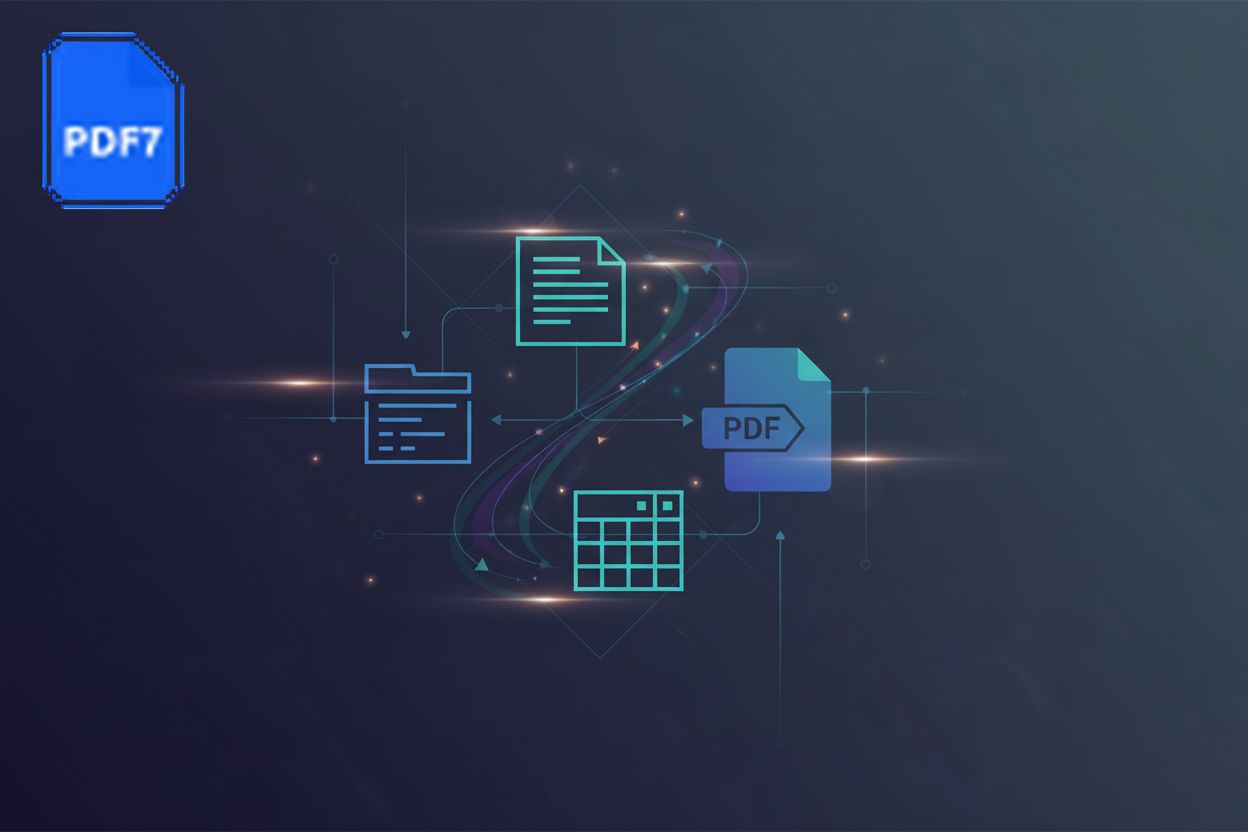Understanding Content Inventories
TL;DR
What is a Content Inventory and Why Does it Matter?
Okay, so ever feel like your files are just… everywhere? Like trying to find a matching sock in a mountain of laundry? That's where a content inventory comes in, and trust me, it's a lifesaver.
Basically, a content inventory is a super-organized list of everything you have. Think of it as a digital audit – you're taking stock of all your documents, web pages, images, videos, and whatever else you've got floating around. It's all about knowing what exists, where it lives, and what condition it's in. It's like a physical inventory of products in a store, but for your digital assets.
- It's comprehensive. We're not just talking about the stuff you remember off the top of your head. We're diving deep, listing those forgotten PDFs, old marketing materials, and that one weird video from 2012. (Anybody remember this creepy youtube video back in 2012? - Reddit)
- It gives you scope. It's easy to lose sight of how much content you actually manage, especially if you're dealing with a large organization or multiple projects. (How do you handle the mental load of juggling multiple projects ...) A content inventory gives you a bird's-eye view, so you can actually see the forest for the trees, y'know?
- It's a roadmap. Imagine trying to plan a road trip without a map. That's what managing content without an inventory is like – chaotic and inefficient.
So, why bother? Why spend the time creating this list? Well, for starters, it's all about control, and that's what helps with digital document management:
- Organization is key. Ever spent hours searching for a single file? A content inventory helps you find what you need, fast.
- Say goodbye to clutter. Outdated or redundant content just clogs things up. An inventory helps you identify what to ditch or update, cleaning up your digital space.
- Stay compliant. Depending on your industry, there are regulations you need to follow, and a content inventory helps you make sure all your documents are up to snuff.
- Plan ahead. System upgrades or changes? A content inventory helps you plan your content migration, making the whole process smoother.
Basically, a content inventory turns your digital chaos into… well, slightly less chaos, and according to Lightspeed HQ, knowing exactly what products you have is the foundation of operating a retail store.
Now, let's talk PDFs. If you're dealing with a ton of these (and who isn't?), a content inventory is even more crucial. It helps you figure out which PDFs need some love – maybe they need converting to a different format, compressing to save space, or securing with passwords. It ensures your pdfs aren't a mess, and that they're doing what they need to be doing.
Think about a healthcare provider needing to manage patient records or a financial institution handling tons of forms. A content inventory helps them keep everything organized, secure, and compliant. Ultimately, it ensures your digital assets are functional tools, not sources of further disarray!
So, now you know what a content inventory is and why it's important. Next up, we'll dive into the nitty-gritty of how to actually create one. Get ready to roll up your sleeves!
Conducting a Content Inventory: A Step-by-Step Guide
Alright, so you're staring at a mountain of files and thinking, "Where do I even begin?" Don't worry, it's not as bad as it looks, really. Think of it like organizing your closet – a little daunting at first, but oh-so-satisfying once you’re done.
First things first: what are we even looking at? You gotta figure out what part of your organization you're gonna inventory. Are we talking all the marketing stuff? Just the legal documents? Get specific.
- Decide which specific areas of your business needs this. Don’t try to boil the ocean, trust me.
- Set some goals. What do you want to get out of this? Compliance? Better efficiency? Knowing what problem you're trying to solve makes this way easier.
- Think about it: a small bakery might focus on recipe documentation and supplier contracts, while a huge hospital needs to inventory patient records, compliance docs, and operational procedures. Different scopes, different headaches.
Okay, time to go hunting! Scour those shared drives, dusty archives, and even that weird folder on your ceo's desktop (jk… mostly). You'd be surprised what kinda digital skeletons you find.
- Use whatever tools you can. Web crawlers are great for websites, document management systems can help, but don't underestimate the power of a good ol' manual search.
- Essential Metadata to Collect:
- File Name: The actual name of the document.
- File Path/Location: Where it's stored (e.g.,
\\server\share\folder). - File Type: (e.g., PDF, DOCX, JPG, MP4).
- Date Created/Modified: When it was made or last changed.
- Author/Owner: Who created it or is responsible for it.
- Size: How much space it takes up.
- Brief Description/Purpose: A quick summary of what it is.
- Keywords/Tags: For easier searching later.
- Audience: Who is this content for? (e.g., internal, external, specific department).
- Status: (e.g., Draft, Approved, Archived).
- Seriously, spreadsheets are your best friend here. Get comfy with 'em.
This is where things get… interesting. You need a system for sorting all this stuff, like those satisfying tiktoks of people organizing their spice racks.
- Come up with labels that make sense for you. Content type (PDF, Word doc), topic (finance, marketing), who's supposed to be reading it (internal, customers).
- Assign each thing to its little category. It's like sorting hats, but for files.
- You know, Unleashed Software talks about ABC analysis for physical inventory, where you categorize items based on value and importance. You could kinda do the same for digital stuff, right?
Now, be honest: is this stuff actually good? Is it helping you, or just taking up space? This is where you start to evaluate what you've found. Does it meet your goals? Is it still relevant?
This isn't a one-time thing. Your digital world is always changing.
So, you've got your content inventory, now what? We've just finished the process of creating it. Next, we'll cover how to keep it humming along and useful.
Leveraging Content Inventories for Enhanced Document Processing
Okay, so you've got all this content inventoried, right? Now what? Well, it's time to actually use that list to make your document processing smoother, safer, and way more efficient. Having a structured inventory means you've got a clear understanding of your content assets, their properties, and their locations. This organized data is the foundation that allows you to perform targeted actions and improvements on your documents.
First up: accessibility! You know, making sure everyone can read your stuff, no matter if they uses a screen reader, or whatever. A content inventory helps you spot which documents are failing in the accessibility department.
- Content inventories is a great way to ensure that all of your documents is accessible to anyone, including those with disabilities.
- It helps you pinpoint documents needing work to meet accessibility standards, like WCAG (Web Content Accessibility Guidelines). These guidelines are crucial for making digital content usable by people with a wide range of disabilities.
- This will supports the creation of accessible PDFs and other formats that are easy to read.
- Accessibility isn't just a nice thought, it's the right thing to do! and it helps you reach a bigger audience.
Ever feel like your documents are wandering around your company, lost in email chains? A content inventory can show you where things get stuck. It helps you streamline how documents are made, checked, and approved, so stuff actually gets done.
- Content inventories can show you the bottlenecks and problems in your document workflows.
- It helps you make the process of making, checking, and approving documents smoother.
- This supports automating document tasks with workflow tools, saving time and headaches.
- Workflow optimization, in this context, means making sure your documents move through your organization efficiently, not just get stuck in email threads forever.
Security is a big deal, especially with sensitive info floating around. A content inventory helps you find those documents that need extra protection.
- Content inventories help you find sensitive documents needing extra security.
- It supports putting in place document protection services and pdf security features.
- This helps stop unauthorized people from getting to, changing, or sharing private stuff.
- Security is super important, especially with sensitive data, you know.
- Content inventories make sure you know where your sensitive documents are so you can protect them.
Sometimes, you need to change a document's file type to make it work better or be more accessible. A content inventory shows you which documents need converting and why.
- Content inventories can show you which documents need to be changed to different file types.
- It supports picking the right file conversion tools and services.
- This helps make documents better for online publishing and sharing.
- File format conversions are important for compatibility and accessibility, you know?
- Content inventories help you figure out which documents need to be converted and why.
So, with a solid content inventory, you're not just listing files – you're making your document processing smarter and safer. Next, we'll talk about keeping your inventory up-to-date and useful.
Best Practices for Maintaining an Effective Content Inventory
Okay, so you've got this awesome content inventory... but how do you keep it from turning into a digital ghost town? The secret? Treat it like a living thing, not a dusty old to-do list.
Seriously, someone has to be in charge. Assigning clear ownership and accountability is the bedrock of a well-maintained content inventory. Who's responsible for updating it when a new document is created? Who makes sure the metadata is accurate? If no one owns it, it's gonna be outdated real fast.
- Assign Responsibility: Make it clear who is in charge of maintaining the inventory. Is it an individual, a team, or a shared responsibility?
- Ensure Accountability: Content owners should be held responsible for the accuracy and completeness of the inventory. If the inventory is inaccurate or incomplete, there should be consequences.
- Define Roles: Spell out the roles and responsibilities of each person involved in the content inventory process.
Don't try to do this all by hand, seriously. Leverage technology to automate and streamline the process. Document management systems, web crawlers, and other tools can make data collection and analysis way easier. The more you can automate, the less likely the inventory becomes a burden.
- Automate Data Collection: Use tools to automatically collect data from various sources, such as websites, file servers, and databases.
- Integrate with Existing Systems: Integrate the content inventory with your existing IT infrastructure, such as your CRM or ERP system. This ensures that the inventory is always up-to-date and accurate. It also reduces the need for manual data entry and eliminates data silos.
- Implement Version Control: Use version control systems to track changes to content items and ensure that everyone is working with the latest version.
Metadata is your friend here. Develop a consistent metadata schema – that is, a clear and consistent set of metadata fields for each content item. A consistent schema is crucial because it enables efficient searching, automated processing, and reliable data analysis. Without it, you're just looking at a jumbled mess of files, making it incredibly difficult to locate specific information or leverage your content for strategic purposes.
- Define Metadata Fields: Determine what metadata fields are important for your organization, such as title, description, author, date created, and keywords.
- Ensure Accuracy: Make sure all metadata is accurate and up-to-date. Inaccurate metadata can make it difficult to find and manage content.
- Establish a Standard: Develop a metadata standard that everyone in the organization can follow. This will ensure that all content items are consistently tagged with metadata.
Content inventories aren't a "set it and forget it" thing, y'know? Regular reviews and updates are essential. Schedule regular reviews of the content inventory to catch outdated or inaccurate information. Update the inventory whenever new content is created or existing content is modified. Think of it like weeding a garden – do it regularly and it's no big deal. Let it go, and you're in for a world of hurt.
Process for Conducting Regular Reviews:
- Schedule Reviews: Establish a cadence for reviews (e.g., monthly for critical content, quarterly for general documents).
- Identify Content for Review: Based on the schedule or specific triggers (e.g., policy changes, product updates), identify which parts of the inventory need checking.
- Perform Checks: For each item flagged for review, verify:
- Accuracy: Is the information still correct and up-to-date?
- Relevance: Is this content still needed and serving its purpose?
- Completeness: Is all necessary information present?
- Accessibility: Does it still meet current accessibility standards?
- Compliance: Does it adhere to any relevant regulations?
- Handle Outdated/Inaccurate Information:
- Update: If minor changes are needed, update the content and its metadata in the inventory.
- Archive: If content is no longer current but might be needed for historical reference, mark it as 'Archived' in the inventory and move it to a designated archive location.
- Delete: If content is obsolete and has no archival value, permanently remove it and update the inventory accordingly.
- Document Review Outcomes: Keep a record of what was reviewed, what actions were taken, and by whom.
Workflow for Updating the Inventory When Content Changes:
- Content Creation/Modification: When new content is created or existing content is updated, the content owner or creator is responsible for updating the content inventory.
- Metadata Entry/Update: The relevant metadata fields for the content item must be entered or updated in the inventory. This includes details like file path, status, audience, and any new keywords.
- Categorization Check: Ensure the content is placed in the correct category.
- Review and Approval (Optional but Recommended): For critical content, a review step by a content manager or subject matter expert can ensure the inventory reflects the changes accurately.
- Inventory Update Confirmation: The system or process should confirm that the inventory has been successfully updated.
Let's say a healthcare provider creates a new patient consent form. That form needs to be added to the inventory, tagged with relevant metadata (like patient privacy, consent type, effective date), and the old form needs to be marked as obsolete in the inventory. Simple, right?
Make sure everyone knows why content inventories matter and how to use them effectively. Provide training to employees on how to contribute to and use the content inventory.
- Provide Training: Develop training materials and conduct training sessions to educate employees on how to use the content inventory.
- Emphasize Importance: Make sure everyone understands the importance of maintaining an accurate and up-to-date inventory.
So, yeah, keeping your content inventory alive takes work, but it's so worth it. Clear ownership, tech to automate, consistent metadata, regular reviews, and trained staff – those are the keys to success. It's about making your content work for you, not against you.





